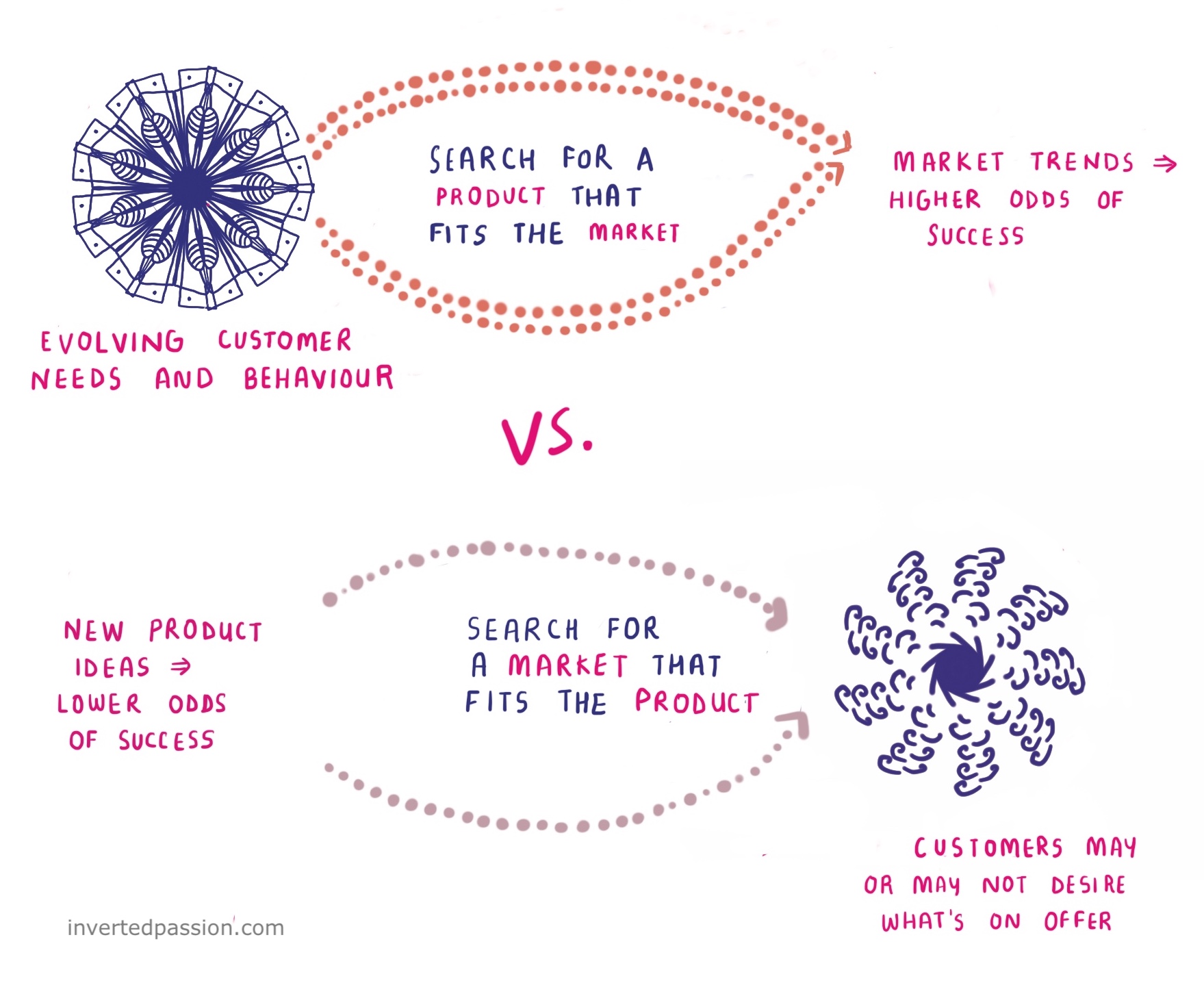It’s near impossible for a product to create a new desire in customers all by itself. No single product creates a market. What usually happens is that multiple environmental, political, economic, social, and technological factors come together to delicately and gradually shape what customers desire, which then creates an opening for new products to address such evolved expectations.

The million dollar question is: how do you discover these evolving trends?
The best way to discover these unambiguous market trends is to look for instances where customers are innovating by themselves by modifying or re-imagining existing products.
Innovative customers have guided entrepreneurs throughout history – from lugging big stereo systems which led to the inspiration for portable music players to scooting their cars off the paved road which led to the inspiration for SUVs.
Researching why customers are doing what they’re doing can provide deep insights into their desires. Maybe not all people want cars to satisfy their desire to go from point A to point B. Maybe some want cars to satisfy their adventure desire?
Another way to discover good business opportunities is to take the latest innovations in technology and imagine how can such innovations offer a radically better solution for existing customer desires.
When Salesforce launched its cloud-based CRM in 1999, the CRM industry was well-established with offerings from Microsoft and other IT giants who offered their CRM software on-premise (i.e. businesses had to build their own data servers and purchase servers to install and host CRM software.)
What Salesforce’s founder Marc Benioff cleverly observed was that the dot com boom of the 1990s meant that software access could now be provided over the Internet. The dot com boom was primarily driven by online consumer retail. Marc Benioff took the newly available web technology and applied it to business software.
This new technology freed up customers from having to install their own servers, which meant that a much wider set of businesses could now use a CRM that’s always improving because it’s hosted not on customers’ servers but Salesforce’s servers.
Note that Salesforce didn’t create the desire for CRM – managing customer database is a human need as old as businesses existed. What they did was to take upcoming technology and apply it to serve the same customer need in a cheaper, better and faster way.
Think of which existing human desires can be better fulfilled by currently emerging technology and you have a good business opportunity.
Because customer desires can only be understood through observing their existing behavior, it’s risky to get excited about an idea first and then go about researching the market. The excitement for an idea will cloud your judgment and inevitably lead you to find confirmatory evidence for it while rejecting all the contradicting evidence. You may think you’re objective but unless you’ve had special training as a market researcher or you’ve failed and learned by yourself many times, you’ll keep falling into confirmation bias towards your pre-existing ideas during research.
Therefore, rather than starting with an idea and then doing research, it’s much better to start with a blank slate and start observing customer behavior and trends. Sooner or later, you’ll find yourself full of bright ideas that are derived from actual customer behavior. Such market-first ideas have a much higher success odds than product-first ideas which may or may not address an unfilled customer desire.
Remember: shoot for market-product fit, not product-market fit.
This essay is part of my book on mental models for startup founders.
Join 200k followers
Follow @paraschopra